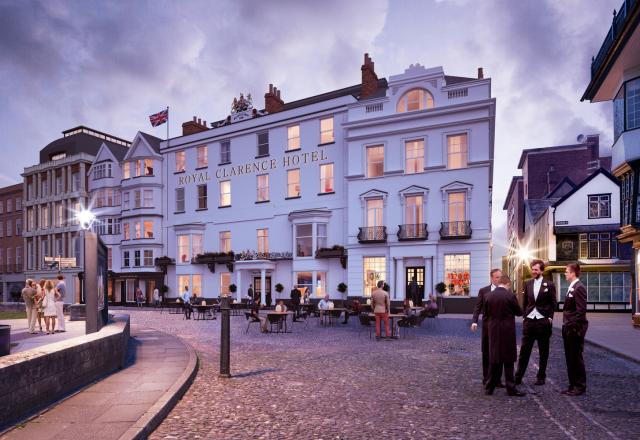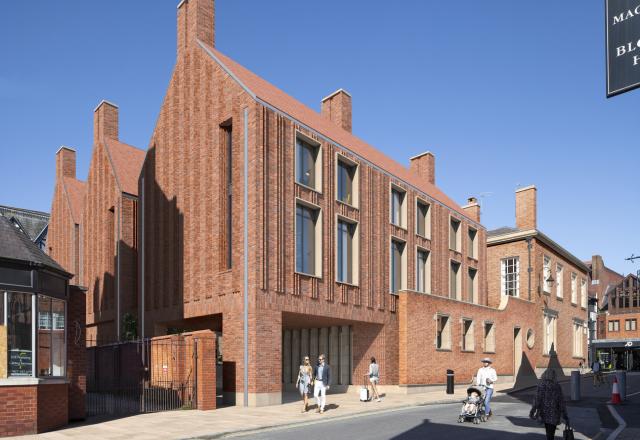Hotels in historic buildings can offer guests a unique experience and make for a selling point that sets a hotel apart from its competition. However, converting or redeveloping a historic building for hotel use can pose a number of challenges that require a careful and considered response. Associate Director, Martin Kirkpatrick, discusses how we approach the design of these buildings and spaces.
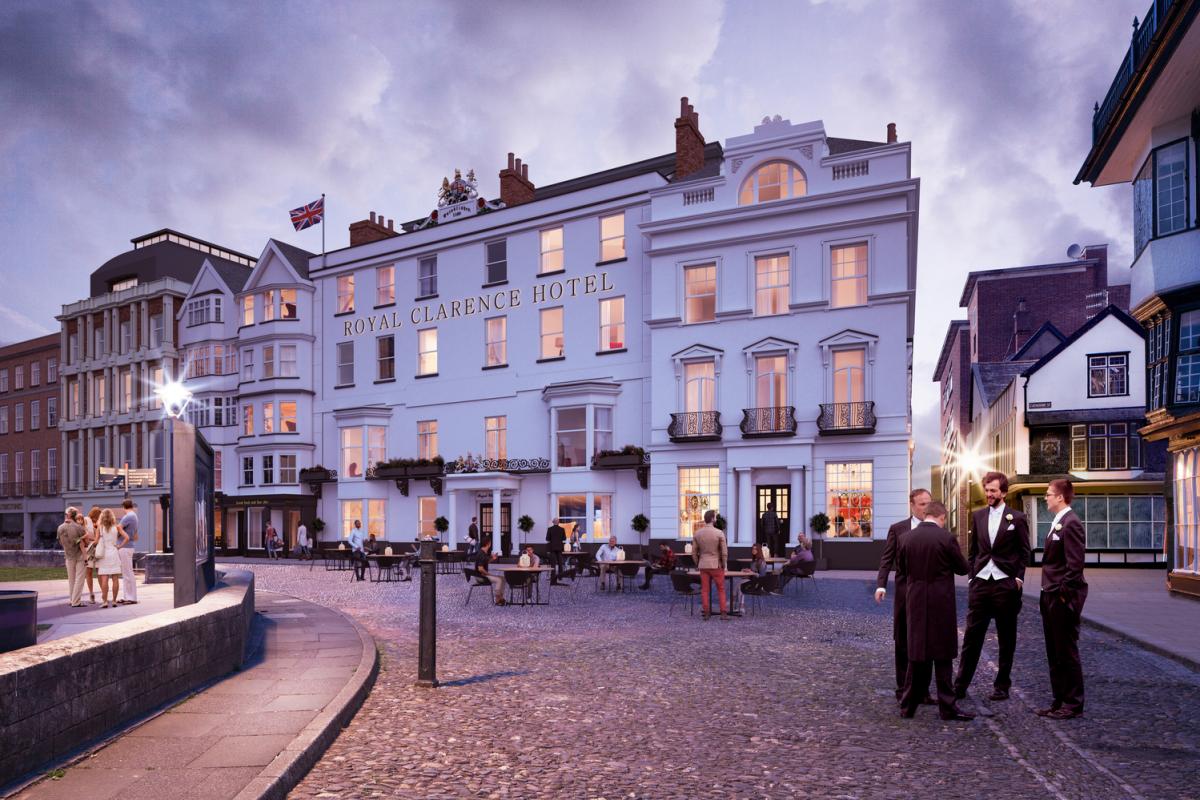
The challenges of repurposing or renovating a historic building to make it fit modern guests can seem daunting, but the reward is often worth the risks.
When dealing with an existing building, the size and contours of the space you ultimately create will be heavily dictated by the existing historical elements.
To understand the parameters of the space we’re designing in, we begin by with an understanding of the significance of the building developed through historic building analysis. From this, a clearer picture begins to form of what constraints we might be faced with and where opportunities lie.
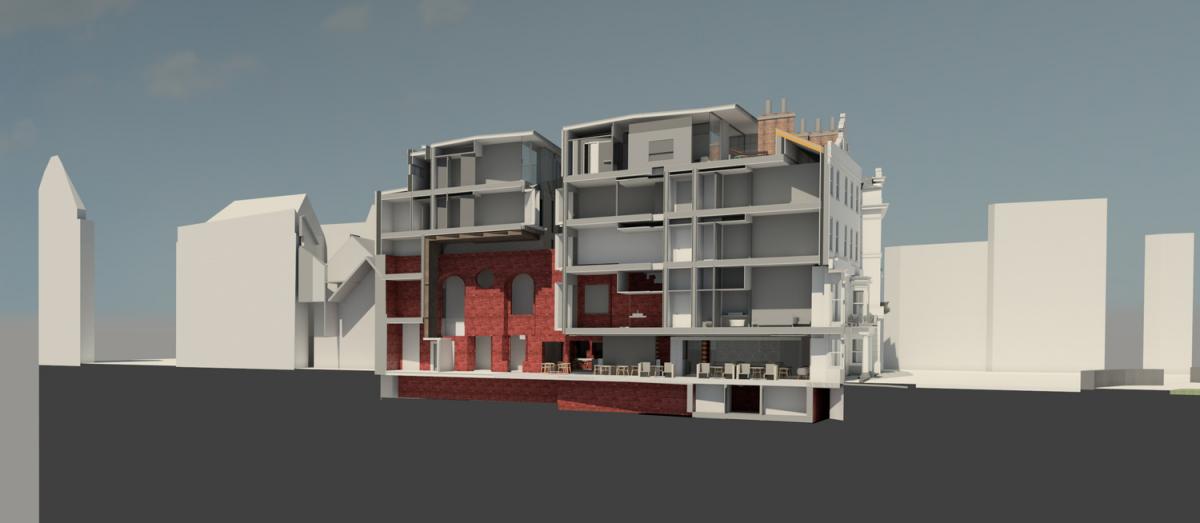
A key constraint often faced when working on a listed building is having to design around columns, chimneys or other built-in elements of historic fabric that need to be retained. On the surface, navigating this might appear challenging, but a little ingenuity and flexibility can go a long way.
For example, when developing the proposals for the rebuild of the fire-damaged, Grade II* listed Royal Clarence Hotel in Exeter, it was crucial that a 15th-century wall that had survived the fire was retained within the new design.
The decision was made to leave the scarring of the original walls visible to create a point of interest within the design. By integrating and exposing the wall, we could use its aesthetic and historic value to provide context and substance while contributing to the experience and ambience of the space.
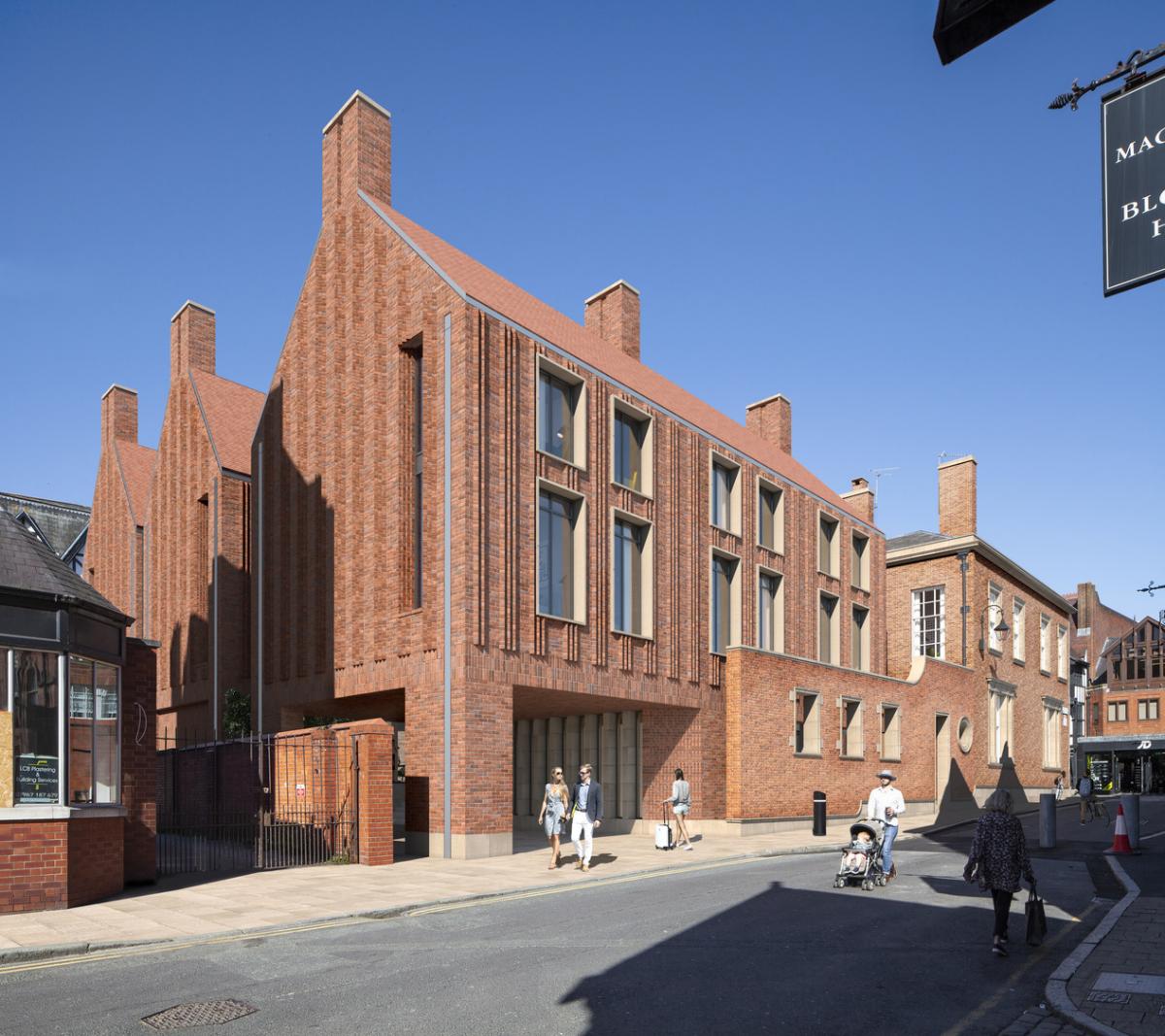
Similarly, as is often the case with historic buildings, each room can vary in size and layout; there are no set ‘room types’. While developing the designs for the conversion of a listed former bank into a 5* hotel, we approached this challenge by looking at each room on a case-by-case basis and drew on the existing historic elements to add character to the spaces and individualise the guest experience. In the rooms in the attic, for example, the building’s authentic beams become one of the attractions, rather than something to worry about.
Issues with space configuration can be even more acute when the hotel is being developed in a building that has not previously been used for hospitality or that has experienced several adaptations during its lifetime. The Royal Clarence Hotel, for example, had developed organically from five separate historic buildings, resulting in a complicated and confusing circulation pattern.
To rationalise the space, our concept introduced a new central atrium which would act as a focal point in the design and around which clear circular routes were designed. The atrium also allowed for rooms to be positioned deeper in the plan bringing plenty of natural light into the guest bedrooms and shared spaces, ultimately improving the internal environment and offer for guests.
While aesthetics take priority when designing a new hotel, we also need to maximise the commercial offer. In some cases, it will be necessary to extend the building to introduce new amenities such as a spa or to increase the amount of accommodation available.
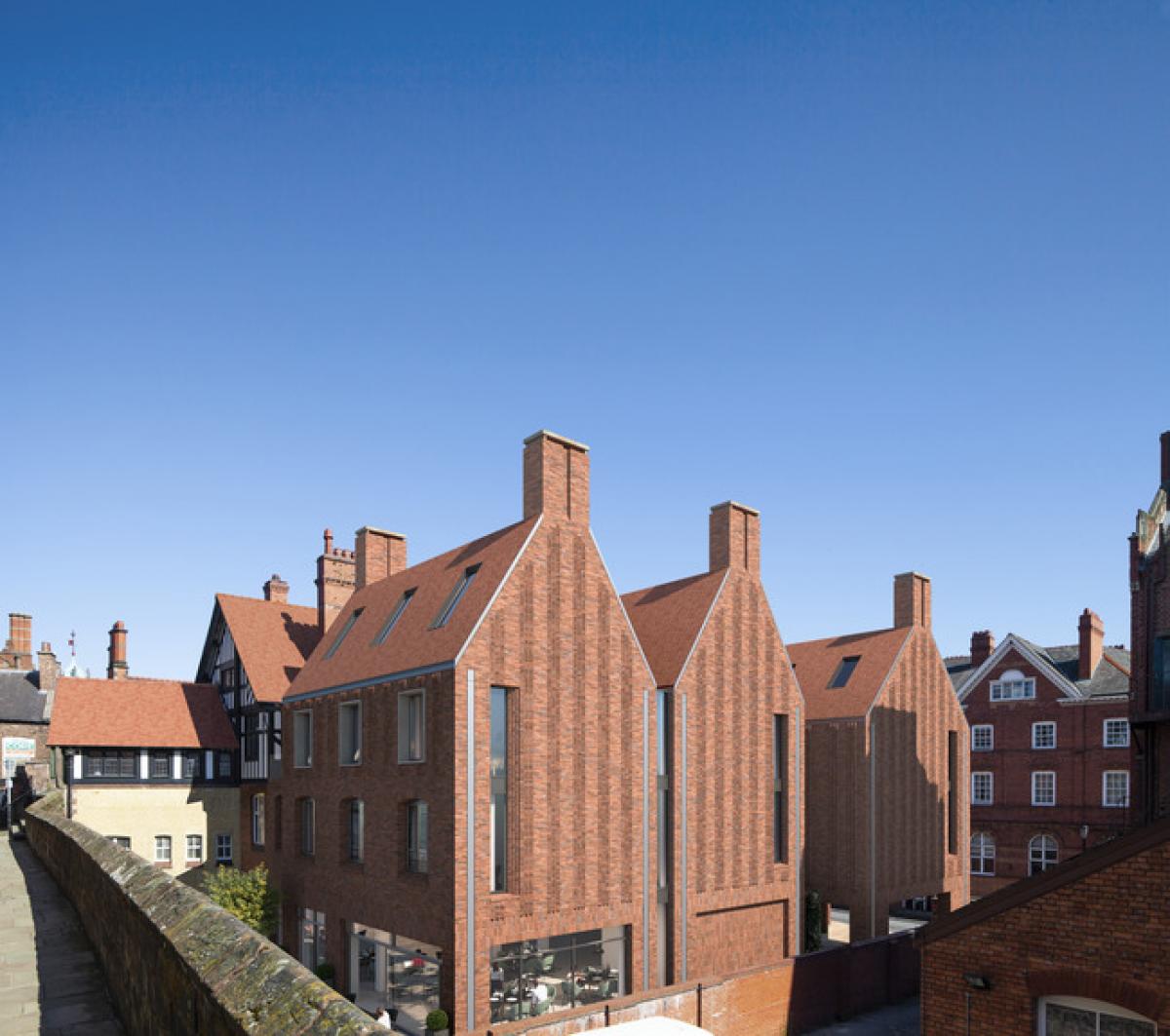
However, when designing any new build elements, we need to ensure that they become a positive and complementary addition to the historic built environment. We test forms and masses within their context to make sure that they are appropriate in scale and interpret historic rhythms and grid patterns to ensure to create designs that sit comfortably within their context.
At our hotel in Chester, an extension has been added that houses the hotel’s restaurant and bar. The extension carefully builds on a similar footprint to the existing building to minimise the impact on the adjacent city walls, which are a designated Scheduled Monument. The extension has also been designed to relate directly to the existing building with a simple form that is respect the existing historic forms, consisting of three parallel pitched elements, separated by glazed links.
To allow the new addition to blend with its context, a terracotta brick palette was chosen. Taking reference from the black and white timber buildings found across the city, the brickwork will feature a vertical brick corbelling detail which will create shadow and texture along the façade.
While these projects offer a snapshot into the way in which we have addressed the challenges on just some of our hotel projects, our approach to designing hotels in any historic setting settings is underpinned by the same approach – a thorough understanding of the past, grounded in years of experience working within the constraints of sensitive sites.
On all our projects, we work closely with our hotelier clients, statutory bodies, and stakeholders to make informed decisions and carefully manage change to deliver contemporary, high-quality hotels and facilities.
Find out more about our work and expertise in the hotel and leisure sector, here.
